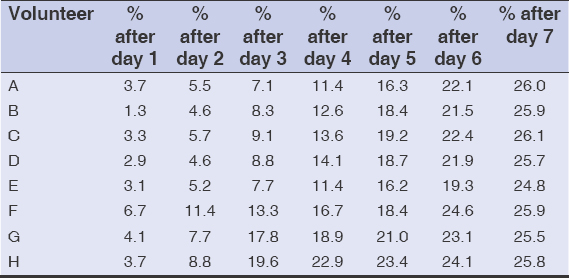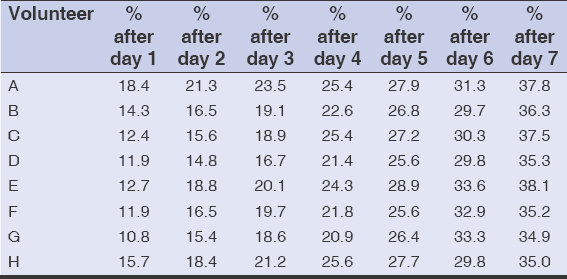The brown alga Laminaria ochroleuca: Charming shell pickers of the strait of Messina, fanciful sirens, and treating war wounds and scars in prostitutes
Piotr Brzezinski1,2, Lorenzo Martini1
1University of Siena, Department of Pharmaceutical Biotechnologies, Via A. Moro 2, 53100 Siena, Italy, 2Department of Physiotherapy and Medical Emergency, Faculty of Health Sciences, Pomeranian Academy, Slupsk, Poland
Corresponding author: Prof. Lorenzo Martini, M.Sc.
Submission: 15.11.2021; Acceptance: 03.02.2022
DOI: 10.7241/ourd.20223.23
Cite this article: Brzezinski P, Martini L. The brown alga Laminaria ochroleuca: Charming shell pickers of the strait of Messina, fanciful sirens, and treating war wounds and scars in prostitutes. Our Dermatol Online. 2022;13(3):321-323.
Citation tools:
Copyright information
© Our Dermatology Online 2022. No commercial re-use. See rights and permissions. Published by Our Dermatology Online.
Sir,
In one of his precious masterpieces, Portuguese novelist José Saramago narrates in detail the lives of the rice weeders who used to work in this land and, after a day of work, soak their bare feet in a bath with hot water, salt, mallow, and chamomile in order to restore their ankles, swollen and inflated for the alga native to these particular paddy fields, Laminaria ochroleuca (Bachelot de la Pylaie), extremely rich in fucose and alginates, provoking an accelerated and paroxistic synthesis of elastin, fibronectin, and collagen.
This brown alga may be retrieved from the waters of France, Spain, Scotland, and the Shetland Islands, yet even in the Azores Islands and Morocco (Alboran Sea) [1–4].
The authors of this paper selected a special Laminaria from the Strait of Messina (Nereocystis luetkeana), a heterokont that is able to grow half a meter per day reaching the surprising and amazing height of 260 ft.). The legend has it that shell collectors, chiefly young girls, day after day, saw their legs together to create the tail of a siren, a cartilaginous appendage rich in collagen and elastin becoming scaly and squamous owing to the seawater.
The authors created a dermocosmetic emulsion with high concentrations of acetolyte from Laminaria ochroleuca (12%) and other nourishing active ingredients (obviously, the chief components were petrolatum and lanolin, as per the pharmaceutical art of preparing the cold cream of Galenus).
Hence, this golden alga is able to support the skin by providing antioxidants to fight free radicals, supporting the health of collagen and elastin, which helps the skin retain elasticity and radiance, reducing fine lines and wrinkles and helping to moisturize the skin while boosting its barrier.
Some researchers [5] claimed that this alga could be useful to build a skin equivalent, as fucoidan significantly stimulates the proliferation of CCD-25Sk human fibroblasts. Also, western blot analysis demonstrates that fucoidan markedly increases the expression of cyclin D1 and decreases the expression of p27. Fucoidan was practically used to reconstruct SE. Immunohistochemical staining reveals that the addition of fucoidan to dermal equivalents increases the expression of proliferating cell nuclear antigen (PCNA) and p63. In addition, the expression of a6-integrin is significantly increased by fucoidan, whereas the expression of b1-integrin, type 1 collagen, elastin, and fibronectin does not markedly change.
In the light of the above, the authors may assert that fucoidan shows positive effects on epidermal reconstruction and is, therefore, beneficial in the reconstruction of all types of skin damage.
The authors recruited a panel of eight people:
- 2 veterans from Iraq and Afghanistan (a-b) presenting old war wounds with no chance to cure these after years of treatments and a myriad of surgical operations;
- 2 elders (one male and one female, 87 and 89 yrs. old, respectively, c-d) presenting severe bedsores;
- 2 older ladies (e-f) who, in the past, underwent unsuccessful aesthetical operations, presenting puckers, seams, furrows and deep wrinkles;
- 2 girls (two ex-prostitutes, one black and one white, g-h) who were scarred with a razor by their enemies.
The evaluation of the efficacy of the cosmetic system was performed with an AC/DC LCD digital triple-clip clamp meter (a voltmeter able to determine the percentage of humidity in the stratum corneum, an ammeter able to determine the percentage of the dermal oil content, and an ohmmeter able to reveal the percentage of skin elasticity, presenting the correct values on a digital display) [6,7].
The experiment lasted 1one week for each of every class of the panel.
Table 1 shows the increment of the percentage of hydration during the seven days of application of the cream in all volunteers. Measurements were driven in the spot of the cicatrix or wound.
 |
Table 1: The increment of the percentage of hydration during the seven days of application of the cream in all volunteers. Measurements were driven in the spot of the cicatrix or wound |
Table 2 shows the increment of the percentage of dermal oil content (with palmitic oil as the reference point) during the seven days of application of the cream in all volunteers. Measurements were driven in the spot of the cicatrix or wound.
Table 3 shows the increment of the percentage of total skin elasticity during the seven days of application of the cream in all volunteers. Measurements were driven in the spot of the cicatrix or wound.
 |
Table 3: The increment of the percentage of total skin elasticity during the seven days of application of the cream in all volunteers. Measurements were driven in the spot of the cicatrix or wound |
It is evident that the percentage depends on the age of the individual, the severity of the injury, and the time of the event of the skin disturbance or ailment.
Fascinating is the rapidity of the scars repairing in the prostitutes. In the case of the white girl (volunteer H), restitutio ad integrum was faster and more harmonious than in the case of the black girl (volunteer G).
Statement of Human and Animal Rights
All the procedures followed were in accordance with the ethical standards of the responsible committee on human experimentation (institutional and national) and with the 2008 revision of the Declaration of Helsinki of 1975.
Statement of Informed Consent
Informed consent for participation in this study was obtained from all patients.
REFERENCES
1. Bunker F, Brodie JA, Maggs CA, Bunker AR. Seaweeds of Britain and Ireland. Second Edition. Wild Nature Press, Plymouth, UK. 2017, ISBN 978-0-9955673-3-7
2. Franco JN, Fernando T, Bertocci I, Rodríguez L, Martínez B, Sousa-Pinto I, et al. The 'golden kelp’Laminaria ochroleuca under global change:Integrating multiple eco-physiological responses with species distribution models. J Ecol. 2018;106:47-58.
3. Smale DA, Wernberg T, Yunnie ALE, Vanceet T. The rise of Laminaria ochroleuca in the Western English Channel (UK) and comparisons with its competitor and assemblage dominant Laminaria hyperborea. Marine Ecol. 2003;36:1033-44.
4. Parke M. Laminaria ochroleuca de la pylaie growing on the coast of Britain. Nature. 1948;162:295-6.
5. Song YS, Li H, Balcos MC, Yun HY, Baek KJ, Kwon NS, et al. Fucoidan promotes the reconstruction of skin equivalents. Korean J Physiol Pharmacol. 2014;18:327-31.
6. Ezerskaia A, Pereira SF, Urbach HP, Verhagen R, Vargese B. Quantitative and simultaneous non-invasive measurement of skin hydration and sebum levels. Biomed Opt Express. 2016;7:2311-20.
7. Constantin MM, Bucur S, Serban ED, Olteanu R, Bratu OG, Constantin T. Measurement of skin viscoelasticity:A non-invasive approach in allergic contact dermatitis. Exp Ther Med. 2020;20:184.
Notes
Source of Support: Nil,
Conflict of Interest: None declared.
Request permissions
If you wish to reuse any or all of this article please use the e-mail (brzezoo77@yahoo.com) to contact with publisher.
| Related Articles | Search Authors in |
|
 http://orcid.org/0000-0001-6817-606X http://orcid.org/0000-0001-6817-606X http://orcid.org/0000-0001-9623-3383 http://orcid.org/0000-0001-9623-3383 |




Comments are closed.